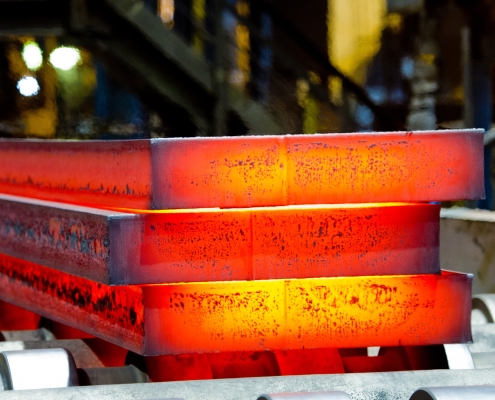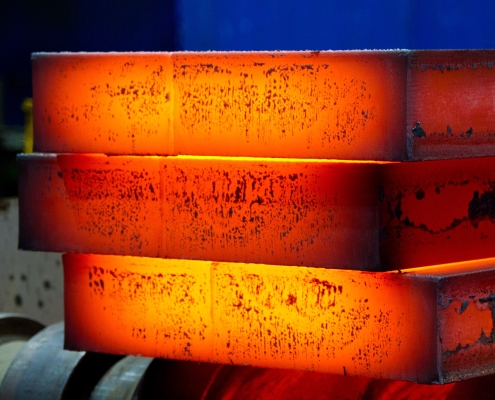Future Energy Steel offers robust Steel Plate for Offshore Platforms, engineered to meet stringent industry standards such as API 2H/2W/2Y and ASTM A131. Our range includes various grades optimized for durability, corrosion resistance, and structural integrity, ensuring reliable performance in harsh marine environments. Key features include high strength, excellent weldability, and resistance to fatigue and harsh weather conditions, which are crucial for the safety and longevity of offshore structures. We provide comprehensive services, including custom cutting, testing, and efficient logistics solutions, backed by our commitment to quality assurance. Future Energy Steel’s offshore platform steel plates ensure unmatched reliability and operational safety in offshore engineering projects worldwide, whether for oil rigs, wind farms, or marine terminals. For more details, please contact us at [email protected].
FAQs
What Are Offshore Platform Steel Plates?
Offshore platform steel plates are specialized structural components designed for use in offshore oil and gas platform construction. These platforms are located in offshore drilling areas, typically in deep waters, and require materials that can withstand harsh environmental conditions such as corrosive seawater, strong winds, and salt-laden air.
Key features and characteristics of offshore platform steel plates include:
High Strength: Offshore platforms are subjected to heavy loads, including the weight of equipment, machinery, and personnel. Steel plates used in their construction are engineered to provide high tensile strength and toughness to support these loads safely.
Corrosion Resistance: Offshore environments expose structures to corrosive seawater and marine atmospheres, leading to accelerated corrosion. Steel plates for offshore platforms are often made from corrosion-resistant alloys or coated with protective layers to enhance their durability and minimize maintenance requirements.
Weldability: Weldability is crucial for fabricating and assembling offshore platform structures. Steel plates must have good weldability for efficient welding processes and ensure strong, reliable joints between structural components.
Low-Temperature Toughness: Offshore platforms may operate in cold environments, where steel plates must maintain their mechanical properties at low temperatures. Specialized grades of steel plates are selected to ensure adequate toughness and ductility under these conditions.
Compliance with Standards: Offshore platform steel plates must meet stringent industry standards and regulations, such as those set by organizations like the American Petroleum Institute (API) and Det Norske Veritas Germanischer Lloyd (DNV GL). These standards ensure that materials used in offshore construction meet safety, reliability, and environmental requirements.
Offshore platform steel plates are used in various structural components of offshore platforms, including jackets, decks, towers, and modules. Their selection is based on platform design specifications, water depth, environmental conditions, and operational requirements. By using high-quality steel plates specifically designed for offshore applications, engineers and operators ensure offshore oil and gas infrastructure’s integrity, longevity, and safety.
Which Steel Plate is Used to Produce Offshore Platforms?
Steel plates used to produce offshore platforms are selected based on their ability to withstand the harsh environmental conditions and operational demands specific to offshore oil and gas drilling. The primary types of steel plates used for producing offshore platforms include:
Carbon Steel Plates: Carbon steel plates are commonly used in offshore platform construction due to their affordability, good mechanical properties, and ease of fabrication. They provide sufficient strength and toughness for various structural components of offshore platforms.
High-Strength Low-Alloy (HSLA) Steel Plates: HSLA steel plates offer higher strength-to-weight ratios than carbon steel plates, making them suitable for reducing weight and material usage in offshore platform structures. These plates are used in critical components requiring enhanced strength and durability.
Quenched and Tempered (Q&T) Steel Plates: Q&T steel plates undergo a heat treatment to achieve high strength and toughness. They are used in offshore platforms where superior mechanical properties are required to withstand extreme loading conditions, such as in jackets and support structures.
Corrosion-Resistant Steel Plates: Offshore platforms are exposed to corrosive seawater and marine environments, which can accelerate corrosion. Corrosion-resistant steel plates, such as those with weathering properties (e.g., ASTM A588) or alloyed with elements like chromium and nickel, are used to mitigate corrosion and extend the service life of offshore structures.
API-Specified Steel Plates: The American Petroleum Institute (API) specifies certain grades of steel plates (e.g., API 2W, API 2H) specifically for offshore platform construction. As per API standards, these plates meet stringent requirements for strength, toughness, weldability, and corrosion resistance.
Duplex and Super Duplex Stainless Steels: Duplex stainless steels (e.g., ASTM A890/A890M) and super duplex stainless steels offer excellent corrosion resistance and high strength, making them suitable for offshore platforms in aggressive environments where chloride-induced corrosion is a concern.
The selection of steel plates for offshore platforms depends on platform design specifications, water depth, environmental conditions (including temperature and corrosion potential), and regulatory standards (such as API specifications). Engineers and designers carefully choose the appropriate type and grade of steel plates to ensure offshore oil and gas platforms’ structural integrity, safety, and long-term performance.
What Are the Standards for Offshore Platform Steel Plates?
Offshore platform steel plates must adhere to stringent standards to meet the safety, reliability, and performance requirements for offshore oil and gas drilling. Some of the key standards governing offshore platform steel plates include:
API Specification 2W: This specification from the American Petroleum Institute (API) covers steel plates for offshore structures, particularly those used in welded construction of fixed offshore platforms. API 2W plates are categorized into several grades (42W, 50W, 50T, 60T, and 70T) based on their minimum yield strength and impact toughness requirements.
API Specification 2H: Another API specification, API 2H, covers carbon manganese steel plates for use in offshore structures in normalized conditions. API 2H plates are categorized into several grades (42, 50, 50T, and 60) based on their minimum yield strength and Charpy V-notch impact toughness requirements.
DNVGL-OS-C101: This standard from Det Norske Veritas Germanischer Lloyd (DNV GL) provides certification and classification rules for offshore structures, including requirements for steel plates to construct fixed and floating offshore platforms.
EN 10225: This European standard specifies technical delivery conditions for welded structures of offshore structures, including steel plates. It covers several grades of steel plates suitable for offshore applications, classified by their minimum yield strength and impact toughness requirements.
NORSOK M-120: This standard from the Norwegian petroleum industry provides material data sheets for structural steel plates used in offshore applications. NORSOK M-120 specifies requirements for toughness, weldability, and corrosion resistance of steel plates for use in harsh offshore environments.
ASTM International Standards: ASTM standards such as ASTM A131/A131M (structural steel for ships) and ASTM A709/A709M (structural steel for bridges) are sometimes referenced for offshore platform steel plates, particularly when specific mechanical properties or corrosion resistance are required.
These standards define criteria such as chemical composition, mechanical properties (yield strength, tensile strength, and impact toughness), dimensional tolerances, testing methods (including non-destructive testing), and certification requirements for offshore platform steel plates. Compliance with these standards ensures that steel plates used in offshore construction meet the rigorous safety, performance, and regulatory requirements necessary for offshore oil and gas operations.
What Are the Applications of Offshore Platform Steel Plates?
Offshore platform steel plates are critical in constructing and operating offshore oil and gas platforms, ensuring structural integrity, safety, and durability in harsh marine environments. Key applications of offshore platform steel plates include:
Jackets and Topsides: Steel plates fabricate offshore platforms’ jackets (support structures) and topsides (surface facilities). These plates provide the structural framework for supporting drilling equipment, production facilities, and accommodation modules.
Piles and Piping: Steel plates manufacture piles that anchor the platform to the seabed. Piles must withstand ocean currents and waves’ vertical loads and lateral forces. Steel plates are also used to fabricate piping systems for transporting fluids (e.g., oil, gas, water) within the platform.
Decking and Platforms: Steel plates are used to construct platform decks and working areas where equipment, machinery, and personnel operate. These plates provide a stable and safe surface for drilling, production, maintenance, and storage activities.
Living Quarters and Accommodation: Steel plates are used to construct living quarters and accommodation modules on offshore platforms, providing housing and facilities for personnel working on the platform.
Safety and Support Structures: Steel plates are used to construct safety and support structures, including stairways, handrails, safety barriers, and emergency evacuation systems. These structures ensure the safety and accessibility of personnel during operations.
Corrosion Protection: Offshore platform steel plates often include corrosion-resistant coatings or alloy compositions to withstand exposure to seawater, salt spray, and corrosive chemicals. This helps extend the platform’s service life and reduces maintenance costs.
Subsea Equipment: Steel plates may be used to fabricate subsea equipment and components installed beneath the platform, such as pipelines, manifolds, and subsea templates.
Offshore platform steel plates are selected based on platform design specifications, water depth, environmental conditions (temperature, waves, and corrosivity), operational requirements, and regulatory standards (such as API and DNV GL). By using high-quality steel plates designed for offshore applications, engineers ensure offshore oil and gas platforms’ reliability, longevity, and safety, contributing to efficient energy production in challenging marine environments.



